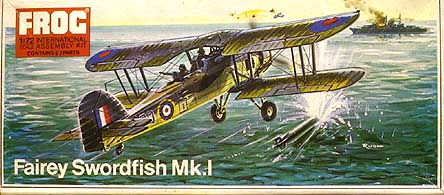Swordfish
-
Thanks for suggestion of aelerons but I have made it just to see that it is mobile!
-
Maybe some kind of lens blur or motion blur will add to the atmosphere are realism. My 2 cents.
-
I'm not that of an expert of torpedos, but in the last picture it seems that the torpedo is in front of the plane. I would think that they would just 'let go' of the torpedo so that it would not be ahead of the plane but below of even a little behind the plane?
-
Yes very good point.
-
When I was decided for rendering the image of Swordfish in action in the moment when he release his torpedo the pilot must turn left or right and up to avoid antiaircraft guns and then he lose the speed and direction, this is my theory but maybe it is not correct
The primary weapon was the torpedo, but the low speed of the biplane and the need for a long straight approach made it difficult to deliver against well-defended targets. Swordfish torpedo doctrine called for an approach at 5000 feet (1500 meters) followed by a dive to torpedo release altitude of 18 feet (5.5 meters).[1] Maximum range of the early Mark XII torpedo was 1500 yards (1400 meters).[2] The torpedo traveled 200 yards (180 meters) forward from release to water impact, and required another 300 yards (270 meters) to stabilise at preset depth and arm itself.[1] Ideal release distance was 1000 yards (900 meters) from target if the Swordfish survived to that distance


-
Nice model. Good work.
FWIW, the control surfaces on the aft edges of the wings are ailerons. The control surfaces on the horizontal stabilizer (rear wings) are referred to as the elevators. The downward deflection of the elevators would put the airplane into a steep dive. They really don't need to move very much to control the airplane's nose up/nose down attitude.
The ailerons work in concert. If the right ones are up, the left ones should be down. They control roll. In your X-ray view you show both lower ailerons down. Since both right airlerons are down, both left ones should be up. That would cause the airplane to roll to the left. Add a little left rudder and the airplane would be in a left turn. In the render from above right rear, the ailerons and rudder are "crossed" which be used to fly the plane in a left slip but with the elevator as it is, the plane ought to be pointed at the ground.

If you set the ailerons and rudder to neutral and give a wee bit of up elevator, your images would be dead on.
-
Your observation are completely correct and I am sorry if it is my mistake but mine intention was to demonstrate the movable parts of model and you all know how hard in sketchup is to change all those rotations .
My intention was to display the model ! -
You did an excellent job of that, too. It makes me miss flying planes.
-
To Dave R
Are you a pilot? -
I have my pilot's license. After committing matrimony and having a child, I haven't had time to fly for about 10 years. I looked at getting legal again but I don't have the time to keep myself proficient so I haven't done it. I do miss it, though.
-
Dave, there are other means for being "high".

-
Advertisement








